This is a loaded draft class at defensive back. For teams looking to upgrade in the secondary, this year's crop of cornerbacks and safeties have the talent to step in and start on Day 1. So let's do a similar exercise to what I did during the season with NFL defensive backs and run through the 2017 draft's top corners and safeties in every category imaginable: ball skills, instincts, range, press coverage, tackling and more.

Best overall cover corner
Marshon Lattimore, Ohio State
Lattimore (6-foot, 193 pounds) showcased his athleticism at the NFL combine with a 4.36-second 40-yard dash, a 38.5-inch vertical jump and an 11-foot broad jump. Those are top-five testing numbers. And Lattimore has the tape to back it up when you study his technique, ball skills (four interceptions, nine passes broken up in 2016) and the ridiculously high ceiling he brings to the position.
Watching Lattimore, he's going to fit in both man and zone-based schemes because he can vary his techniques in coverage. Lattimore can jam, reroute and mirror the release of the wide receiver when playing press coverage. Want to switch it up and play bail coverage? He can do that, too. Open, sink and stack on top with eyes on the quarterback. Lattimore is also effective playing a "taxi" technique (inch-off, keep shoulders square) and off-man coverage. Plus, he has the lateral skills, flexibility and closing speed to drive on the football. (See example below.)
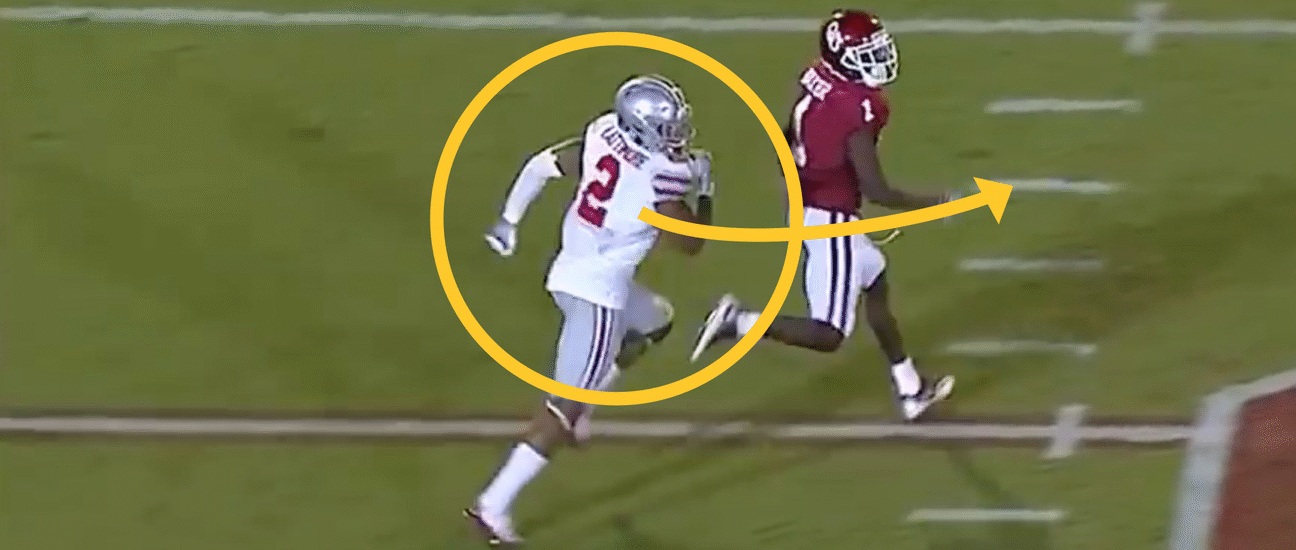
Lattimore is actually in a trail position here versus Oklahoma, but he's also baiting the quarterback as the receiver runs a post route. Sit low to the inside hip, get the eyes back inside and then close the distance immediately when the ball is in the air. Lattimore undercuts the receiver perfectly, stepping in front of the throw for a pick.
Lattimore's past hamstring issues have to factor into his overall grade, but the upside here is really off the charts. He has the potential to develop into a top cover corner at the pro level.

Best instincts
Jamal Adams, LSU
With reports of Adams (6-foot, 214 pounds) running in the 4.3 to 4.4 range at his pro day, the LSU safety checked off a major box for NFL scouts. That's legit speed for someone as physical as Adams. It's also a better indication of his true game speed: Adams plays fast because of his natural instincts and vision on the field.
Go check out any LSU tape from last season. The run game? Adams gets downhill immediately, like a missile to the ball (7.5 tackles for loss in 2016). That starts with his eyes: his ability to read run/pass keys. This also translates to his coverage skill set in the slot. Adams shows very little wasted movement and has a great feel for when the receiver is going to break at the top of the route. Adams does a great job of locating the ball down the field, anticipating route combinations and eliminating the distance to ball carriers.
Remember, you can't really teach instincts. And ultimately, that's why Adams would be the first safety to come off the board if I were calling the shots. He's an impact player, a guy who has the ability to change the identity of a pro secondary.

Best range
Malik Hooker, Ohio State
Hooker has the type of range that every NFL team wants in the middle of the field: that ability to close the seam or the post and get all the way to the bottom of the numbers versus the deep ball. Like a center fielder in baseball, Hooker gets a great jump on the throw and covers some serious ground.
There are some negatives with Hooker. We don't know Hooker's stopwatch speed. He didn't do any tests at the combine while recovering from offseason surgeries. He can definitely add some more upper-body thickness to his frame (6-foot, 206 pounds). And scouts have to take into account his lack of experience: He started just one season at Ohio State. His inexperience shows up in the angles he takes downhill to the ball.
But watching Hooker track the ball and overlap vertical routes, it's clear that he plays at a 4.4 clip and has special talent as a single-high safety. This type of play is super rare and will translate to the pro game:
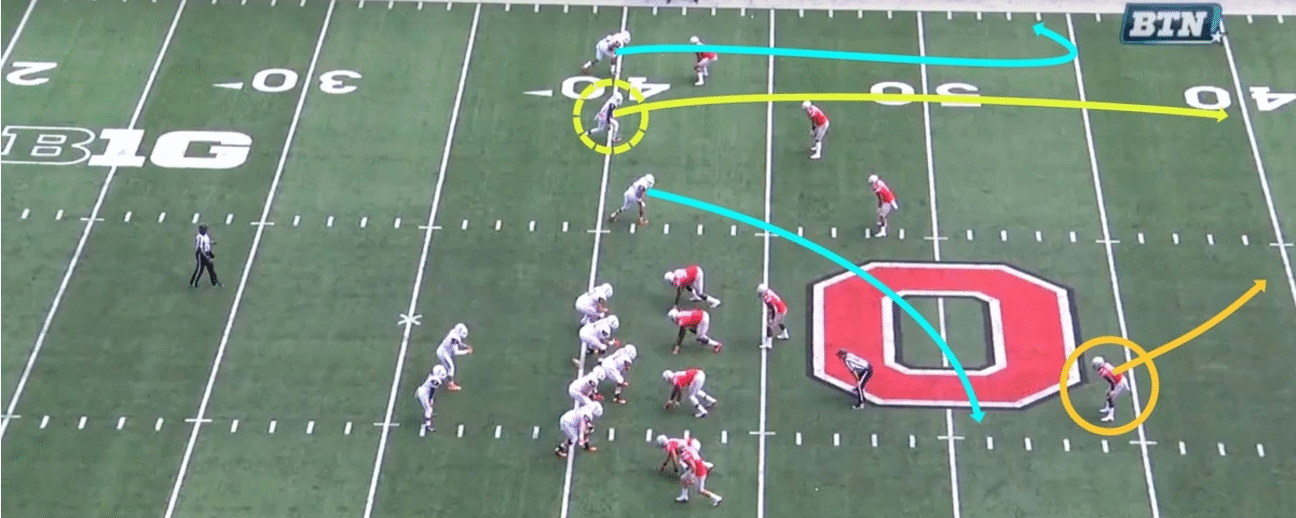
Hooker starts on the opposite hash, opens to the quarterback and gets a great break versus Bowling Green on the vertical route, pushing up the numbers. That's a long way to go, but look at Hooker's head here: He reads the shoulders of the quarterback and takes a solid angle to put himself in a position to get over the top of the route. Then he plays the ball at the highest point and secures the interception. That's a big-time play.
Given the growing need for more single-high safeties who have range and ball skills, Hooker looks like a top-10 pick. Even with an expected transition period, he has the ability to develop into a Pro Bowl safety.

Jack-of-all-trades
Jabrill Peppers, Michigan
At 5-foot-11 and 213 pounds, Peppers doesn't project as an NFL linebacker. We know that. He played linebacker last season at Michigan to help the team, but that also clouded his draft stock. He was playing out of position, which limited his production (only one career interception) and his overall impact on tape. Take a look at the game versus Iowa, for example. You just don't see the flash plays of a first-round pick.
However, after running a 4.46 at the combine and showcasing good footwork and change-of-direction speed in drills, he has the skill set and athleticism to play in a pro secondary. I don't have any doubts about Pepper's ability to get off the numbers in Cover 2 or to roll down over a tight end in coverage. He can flip his hips and drop to the middle of the field, and he's going to tackle versus the run. The ball skills argument? Watch him field punts in the return game. It's there.
Where do you play him? I would put Peppers at strong safety and also get creative in my sub-packages. Drop him down as a dime back, match him up to a running back removed from the core of the formation and send him on edge pressures to disrupt the throwing platform of opposing quarterbacks. There's value here with Peppers for coaching staffs that think outside the box and grade him on how he fits in a modern NFL defense.

Best press-man skills
Kevin King, Washington
Along with Sidney Jones, the Huskies featured two of the best press-man corners in the country last season. These guys have the length and technique to challenge routes at the line of scrimmage: compete and stick to receivers.
At 6-foot-3 and 200 pounds, with 32-inch arms, King has the ideal size for a press corner. But what's even more impressive are the testing numbers King dropped at the combine, given his linear frame: 4.43 speed, 39.5-inch vertical, a 3.89 short shuttle and a 6.56 three-cone. And that three-cone? It was the top overall time -- for any position.
On tape, King can lock guys down outside of the numbers. He plays a physical game. And he's going to tackle. King is a great fit for defensive systems in Seattle or Kansas City. He's at his best when he can get in the grill of opposing wide receivers, impact the release, stay on top of the route and play the ball. (See example below.)
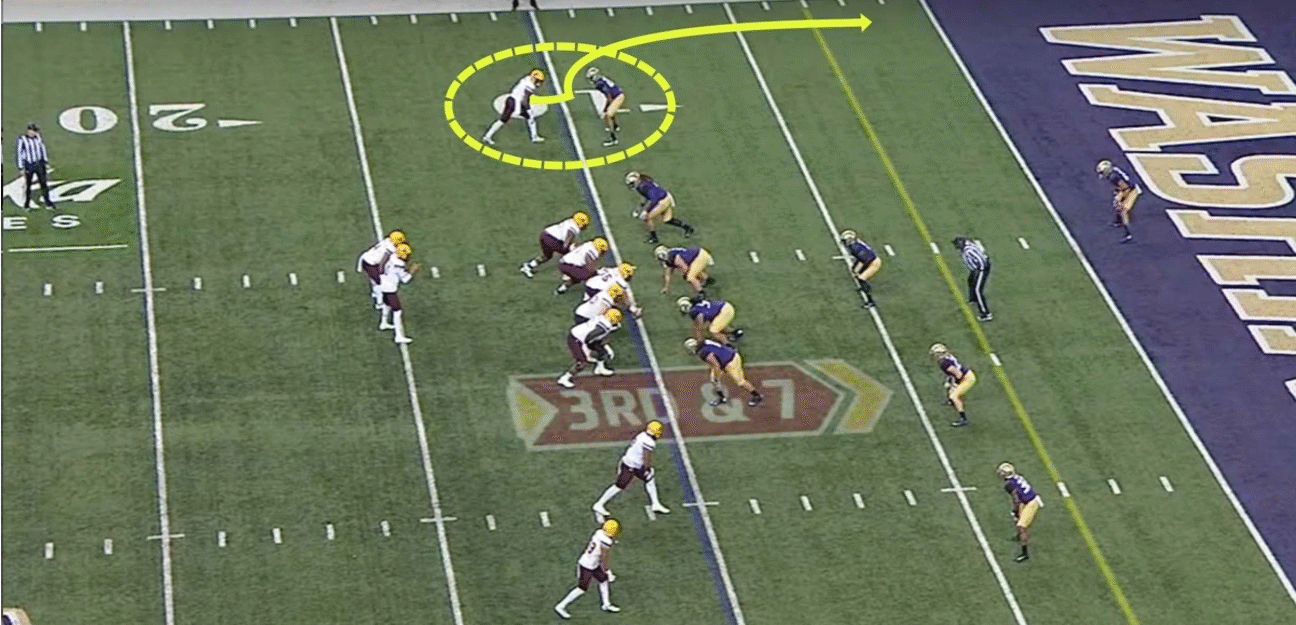
I love this play from King versus Arizona State, because he shows how to take away the fade in the red zone. Aligned in a press position, King uses the "taxi" technique at the release and stays square to the receiver. That allows King to stay on top of the release, open his hips and press (or pin) the receiver into the boundary. Now, King is in total control of the route. He stacks, eliminates the receiver's path to the ball and goes up at the highest point (with one hand) to make this play. That's textbook.
Given his combine workout, plus the high-level tape and production at Washington (two interceptions, 13 passes broken up in 2016), King is rapidly climbing up boards. He has first-round ability for defenses that cater to his strengths.
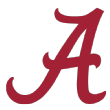
Most physical coverage corner
Marlon Humphrey, Alabama
Florida's Quincy Wilson could be the pick here, along with King and Jones, but I'm going with Humphrey because of his college tape. At 6-foot and 197 pounds, with 32¼-inch arms and the long speed (4.41 40) to play the vertical route tree, Humphrey has the makeup of a first-round corner.
But what I really like is how he physically challenges opposing offenses. This guy is going to land some strong jabs in press coverage, rag-doll blockers on the edge versus bubble screens, stack on top of receivers and tackle versus the run. And he's not polite about it.
Humphrey could fall to the second round because of his inability at times to locate the ball down the field. And he can get stuck in his pedal at the top of the route when playing off-man coverage. However, I want guys at corner who get after receivers, attack blockers and show up versus the run. He laid the wood on this play against USC and consistently blew up bubble screens versus Texas A&M. Remember, there is no substitute for physical play in an NFL secondary.

Most overlooked DB
Budda Baker, Washington
Baker lands in this spot because he doesn't get the same national attention of Adams, Hooker and Peppers in the discussion of the draft's top safeties. And we could really say the same thing about playing in a Washington secondary in which King and Jones grabbed the majority of the hype.
However, Baker is legit, an ultra-productive safety with the versatility to make an impact early in "big nickel" packages for NFL clubs. Last season, Baker led the Huskies in tackles (71) and tackles for loss (10), and he recorded three sacks, picked off two balls and broke up six passes. A good fit as the third safety in sub-packages as a rookie, Baker has the speed (4.45 40) and athleticism to play multiple roles on the field. Take a look at the example below, which features Baker blitzing off the edge:
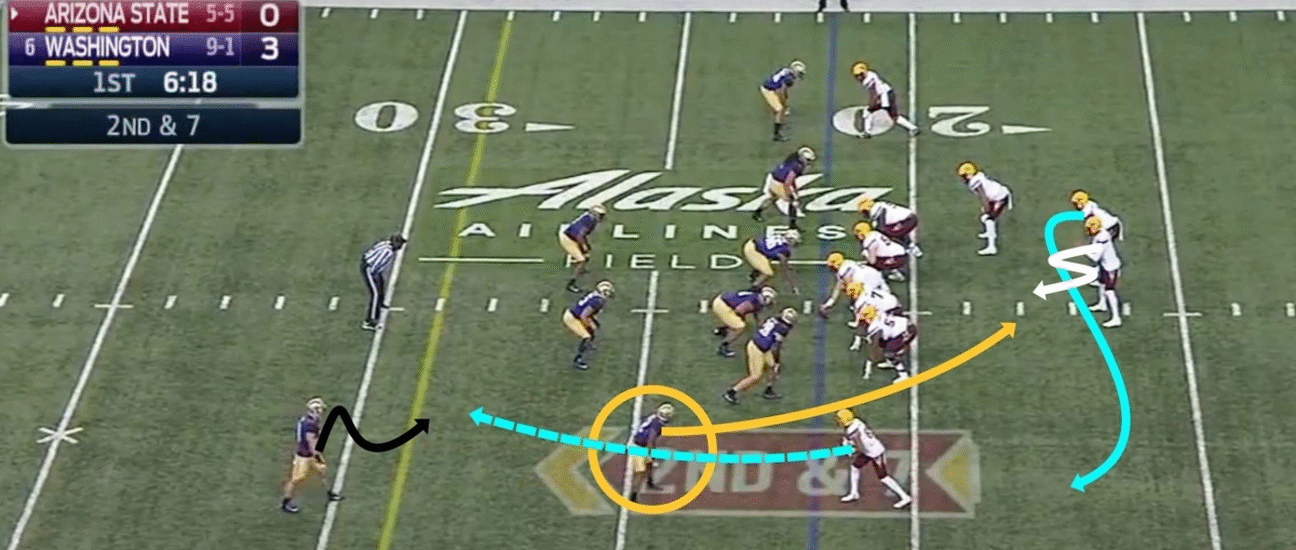
The Huskies show coverage at the snap here, rotate the free safety and send Baker (orange circle) to get home. With the quarterback looking to unload the ball to the running back on the swing route, Baker immediately closes the distance and puts the QB on the ground.
Baker doesn't have great size for the position (5-foot-10, 195 pounds), and that could impact his draft stock. But a team could find some real value if they scoop him up on Day 2.

Biggest freak
Obi Melifonwu, Connecticut
When Melifonwu walked onto the field for the first day of Senior Bowl practices, I thought this cat was a linebacker, standing at 6-foot-4 and weighing 224 pounds. He has a long, athletic frame. He's yoked up, too. But I was curious about his movement skills in the secondary. At that size, would Melifonwu be exposed as a deep-half or middle-of-the-field safety?
Man, he was impressive in drill work, showing the fluidity, speed, range and enough flexibility to transition in coverage. Melifonwu also showed up in one-on-ones. He can pedal, play press and challenge routes. He's a very smooth athlete in the secondary.
The combine? Come on. Melifonwu tore that thing up with a 4.40 40-yard dash and a 44-inch vertical. And he almost hit 12 feet on the broad jump (11 feet, 9 inches). That's freakish stuff. And it tells us that Melifonwu, while still a little raw, has super rare ability and massive upside.

Best tackling corner
Desmond King, Iowa
We know King (5-foot-10, 201 pounds) has top-tier ball skills at the cornerback position after he posted 14 career interceptions at Iowa. King played both press and off-man coverage, showing a really good feel in zone coverage. Read the QB and break on the throw. He's a smart, competitive player whose 4.52 40 at Iowa's pro day answered questions about his top-end speed.
However, King's best trait, in my opinion, is his ability to tackle. He embraces the physicality it takes to put ball carriers and receivers on the ground. When playing off the ball, King is quick to diagnose his run/pass keys, come downhill and drop his pads on contact. Take a look at this lick King dished out during an Iowa practice last summer:
Desmond King isn't just a cover guy.
— Big Ten Network (@BigTenNetwork) August 17, 2016
No, the @HawkeyeFootball star can tackle, too. pic.twitter.com/LxvdgEWaR7
(via @BTNDaveRevsine)
There has been some talk about King transitioning to the safety position in the pros. I'm not a huge fan of that move, because King has the skill set to play inside over the slot and the flexibility in his hips (6.67 three-cone time) to transition in coverage outside of the numbers. But given his ball skills and tackling ability, I wouldn't be surprised if a pro team tries to move him to safety.

DB I'd want to coach
Tre'Davious White, LSU
Given the amount of underclassmen who declared this year, White stands out from a coaching perspective as he makes the transition to the NFL. This guy is a four-year starter at LSU, and it shows on his tape. White plays like an experienced cornerback against the top competition in the country. With good technique in coverage, the ability to support the run and the speed (4.47) to match up down the field, White checks off all the boxes for NFL scouts.
While White doesn't have the same upside or flash plays as Lattimore, he does make plays on the ball (two interceptions, 14 passes broken up), and you know what you are getting as a coach. White is a consistent player who was developed in a great college program. He is isn't a raw prospect who needs to be broken down and rebuilt from the ground floor to reach his potential. And given the lack of time pro coaches actually get to work with rookies, White is a solid Day 1 corner who will play valuable minutes this season.

Best ball skills
Malik Hooker, Ohio State
Desmond King, Wilson and Lattimore could all top this category, but Hooker had seven picks last season, and he returned three of them for touchdowns. He's a true ball hawk in the middle of the field, a game-changer who can create turnovers and take away deep shots over the top of the secondary, given his ability to finish plays. (See video below.)
This is a ridiculous play from Hooker in the national semifinal game versus Clemson. The amount of ground he covers to get to the fade route? Amazing. And the ability to play the ball -- at top speed -- is even better. There aren't many safeties in the pros who are going to show that same type of range and ball skills when overlapping the deep ball from the middle of the field.

Biggest hitter
Rayshawn Jenkins, Miami
Jenkins (6-1, 214 pounds) projects as a classic box safety. Similar to the Titans' Johnathan Cyprien when he came out of FIU, Jenkins is that downhill thumper. He's a hitter, a safety who is going to size up running backs when he fills the hole and find wide receivers working back to the middle of the field. Drop the pads and deliver a strike.
At the Senior Bowl, Jenkins consistently showed up in my notes. He has the size to play in the box and he's aggressive. He also tested very well in Indianapolis at the combine, running a 4.51 40 and jumping 37 inches in the vertical. He has the athleticism to fit in an NFL defense, and he could also find a role as a nickel linebacker.

Best slot corner
Jourdan Lewis, Michigan
Lewis played outside the numbers at Michigan, but he projects more as a slot defender in the NFL because of his size (5-foot-10, 188 pounds) and lateral ability. Lewis has the footwork to mirror a "two-way go" in the slot (inside or outside release), and he can change directions with speed to break on the ball. (See video below.) That's key when defending option routes or intermediate cuts.
Lewis ran a 4.54 40 at the combine, but I'm not overly concerned with that time if we are discussing a slot cornerback. I'll take the footwork, the quickness and the ability to break with clean angles to the upfield shoulder of the receiver. That's where I see Lewis making an impact in the pros. He can compete inside and play a ton of football as a rookie.

Best transition ability
Gareon Conley, Ohio State
Another potential Ohio State first-rounder, Conley checks in because of his transition ability -- the speed to close on the ball from multiple techniques. Conley can play off and drive downhill, open and sink to break on the throw and close the distance to the ball in zone coverage. He's quick to flip his hips, and he can instantly transition to play the comeback, curl or out route.
Conley has the size (6-foot, 197 pounds), length (33-inch arms) and production (four interceptions, eight passes broken up in 2016) to grab the attention of NFL scouts. But his stock started to really rise after his combine workout. Conley ran a 4.44 40, jumped 37 inches and posted a 6.68 three-cone time. And it's the upper-tier athleticism that shows in his on-the-field movements at the position.

Special teams game-breaker
Adoree' Jackson, USC
Jackson (5-foot-10, 186 pounds) has some of the smoothest footwork of any defensive back in this class, and he will find a role early in his career as a nickel corner while he develops his overall game. But his immediate impact will come as a returner in the kicking game. He has true game-breaking ability with the ball in his hands. Just study his vision, patience to find the open lane, the burst to get vertical and the open-field ability to make guys miss in space.
USC 20, UCLA 14. Happy to have the most exciting player in CFB on our team. @AdoreeKnows all the way! (LIVEonABC) https://t.co/ANTuGtoQhD
— USC Trojans (@USC_Athletics) November 28, 2015
Jackson returned two punts for scores last season and added two more kickoff-return touchdowns. A great tape to watch? Check out Jackson in 2016 versus Notre Dame. He returned a punt for a touchdown, a kickoff for a score and added another on offense when he caught a swing pass out of the backfield. Jackson has great speed (4.42 40) and natural athletic ability, and his value alone as a kick returner is enough to warrant a second-round grade.

Best down-the-field technique
Sidney Jones, Washington
Defensive backs coaches always stress the ability to finish at the point of attack (on the hip of the receiver). That's how you find the ball and get it out. Drive to the upfield shoulder, play the pocket and win the matchup. And based on the tape I watch, Jones is at the top of the list. He's an aggressive, ultra-competitive corner who can play multiple techniques and challenge receivers all over the field.
Jones recently told me, "I can do it all. If they say that I'm good at man-to-man coverage, that's what I like to hear. If you can do that, you are pretty valuable to a team. I feel like that's a great positive. That's what I specialize in, but I can do anything else. I'm a football player."
Jones had a top-20 grade before tearing his Achilles tendon during Washington's pro day workout. That could force Jones to slide down the board a bit on draft day, but scouts rave about his ability down the field, and coaches love the effort he plays with. And based on his overall skill set, he's one of the top cornerbacks in the draft. He can locate the ball and finish.

Midround sleeper
Corn Elder, Miami
San Diego State corner Damontae Kazee is another name to keep an eye on here, but I'm more focused on Elder because of the toughness he plays with. A good fit as a nickel corner in the pros, Elder (5-foot-10, 183 pounds) has the ability to match up inside, and he's a solid tackler at the point of attack (76 tackles, 4.5 tackles for loss, 12 passes broken up and one interception last season).
Elder should be a core special-teams player as a rookie, with the skill set to compete for playing time as a sub-package defender. I was impressed with his competitiveness during Senior Bowl workouts, and you can never have enough toughness in the secondary. Elder will present good value when he comes off the board in the middle rounds.
